
- rufio275
- New Member
 Offline
Offline - Registered: 03-10-2014
- Posts: 24
L C Smith Super Speed Carriage Issue?
I recently bought a 1940s Super Speed. It's in okay shape. I was able to remove the back, side, and front plates and clean what little crud had accumulated with denatured alcohol. The carriage, however, has a problem. All the keys, including the space bar, advance the carriage smoothly, but about a quarter of an inch before reaching the far margin where the bell rings, the carriage sticks. Whatever key I hit will not strike the platen, the space bar will not depress completely. Now, if I apply the smallest bit of pressure to the side of the carriage and strike a key, it moves along with no trouble, the bell rings, and it's fine. But on its own it gets stuck in this same spot every time.
I examined all the teeth and moving parts from the back and there doesn't seem to be any obstruction or corrosion. I guess it's due to the plates that shield the machine, but this is one of the cleaner manuals I've come across. I'm wondering if maybe there's not enough tension as the motor winds down? Except after it gets past this one part it continues to move along fine for the rest of the line. Does anyone have any thoughts or suggestions?
Thanks!
- Uwe
- Moderator
 Offline
Offline 
- From: Toronto, Canada
- Registered: 12-3-2013
- Posts: 4,408
Re: L C Smith Super Speed Carriage Issue?
Just to be clear, does the carriage always stop at the same postion relative to where it is on the machine, or its proximity to the right margin? In other words, if you move the right margin does it still stop where it did before?
The pronoun I has always been capitalized in the English language for more than 700 years.
- rufio275
- New Member
 Offline
Offline - Registered: 03-10-2014
- Posts: 24
Re: L C Smith Super Speed Carriage Issue?
The stoppage does seem to travel with the margin. In other words, if I move the margin inward, an inch to the left, the keys snag at that point now.
- •
- Uwe
- Moderator
 Offline
Offline 
- From: Toronto, Canada
- Registered: 12-3-2013
- Posts: 4,408
Re: L C Smith Super Speed Carriage Issue?
Okay, well that tells me it likely isn't an issue with the carriage rails and far more likely to do with the margin stop components. It sounds like just a minor adjustment/fix is required. I'd suggest looking closely at the what's hitting the right margin stop when the carriage stops moving. Unfortunately, my Super-Speed is in storage right now, but if needed I'll dig it out to give you better advice. This raises one question though: What year is your Super-Speed? Mine has a quick-set margin system and it sounds like your's doesn't.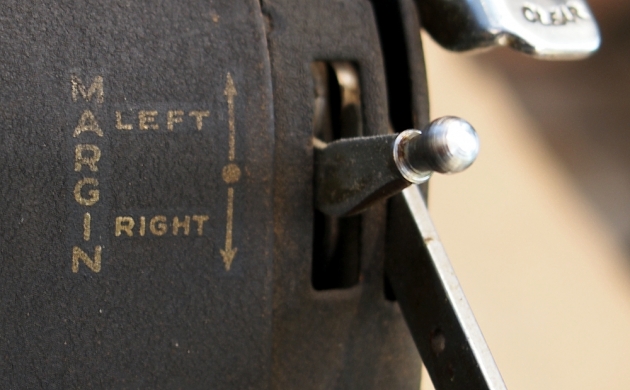
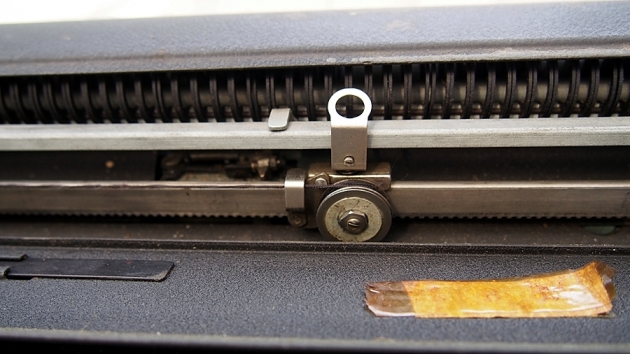
The pronoun I has always been capitalized in the English language for more than 700 years.
- rufio275
- New Member
 Offline
Offline - Registered: 03-10-2014
- Posts: 24
Re: L C Smith Super Speed Carriage Issue?
Thanks for the quick reply and pictures! If I'm reading the serial number correctly, it is a 1945 Standard. (The number is 1A1906860-11.) The machine appears to have a margin system similar to yours in the first photo (same knob, similar diagram). Instead of MARGIN it has a heavy white vertical line, and then three horizontal white lines where yours says LEFT, (blank), and RIGHT.
As far as what's hitting the right margin stop, I can't spot anything out of the ordinary. No dust, grime, dirt, hair, etc. Could it be that the machine is just so old and hasn't been used in a while, and maybe some regular typing will free up the mechanisms? I've done a pretty thorough cleaning already. Unfortunately I'm not too familiar with L C Smiths. I've only owned Royals but the price was right on this one and I thought it seemed like a neat machine.
Thanks again for your help!
- •
- Uwe
- Moderator
 Offline
Offline 
- From: Toronto, Canada
- Registered: 12-3-2013
- Posts: 4,408
Re: L C Smith Super Speed Carriage Issue?
The machine in the photos is of my 1946 model (2028811). Incidentally, the "1A" is the real model name for the machine, and the "-11" at the end is the carriage size. At least we know that you have a quick-set margin system too. When I suggested looking for an obstruction I should have specified that I didn't mean dirt or other foreign items. What I meant was a mechanical issue. It's not uncommon for typewriters to have issues with the margin/margin release systems and of all the ones I've seen many just needed something either bent back into its proper place or shape, or an adjustment of some kind needed to be performed.
Based on what you describd it sounds like your carriage isn't travelling all the way to the stop, which should be approximately four to eight spaces after the margin bell rings. Use the space bar to move the carriage until it stops, and then find out what is stopping the carriage from moving further by looking under the carriage at the back (you can access this area after popping off the quick access service panel at the back).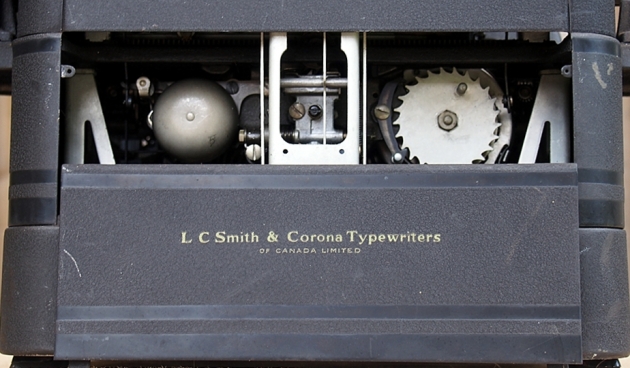
The pronoun I has always been capitalized in the English language for more than 700 years.
- rufio275
- New Member
 Offline
Offline - Registered: 03-10-2014
- Posts: 24
Re: L C Smith Super Speed Carriage Issue?
Thank you for the direction. I wasn't able to see anything that needed bent or manipulated, so I did another round of cleaning with denatured alcohol. This seemed to free up the margin stop a little more. The more I played with it, the freer it became. It's not 100% but it's moving past the bell more freely now.
While I have you here, I have not been able to find ribbons that fit this thing. Do you know what kind of ribbons yours takes? I ordered a plastic universal ribbon, similar to what I use on my Royals, but it did not fit (all the ones I've seen for Smith and Coronas do not list the Super-Speed as being compatible). The L C Smith has a mechanism that sticks up into the spool and switches the direction of the ribbon, and I believe there needs to be room for this in the spool. Unfortunately the machine I bought not longer had the original metal spools. Any pointers you could give me would be much appreciated!
- •
- Uwe
- Moderator
 Offline
Offline 
- From: Toronto, Canada
- Registered: 12-3-2013
- Posts: 4,408
Re: L C Smith Super Speed Carriage Issue?
Regular 13 mm (½") ribbon works great in mine. I have metal spools in it, but there's nothing special about them unlike spools used by Royal and Remington machines of that era. Maybe these photos will help for comparison: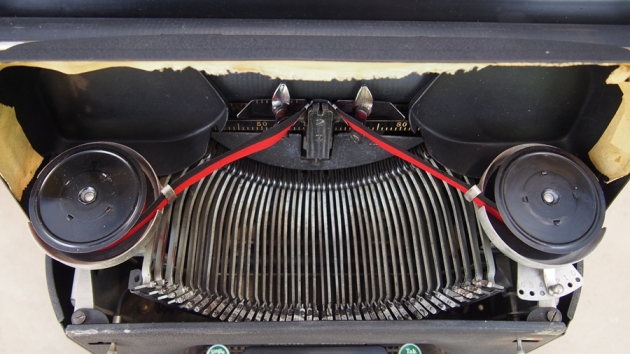
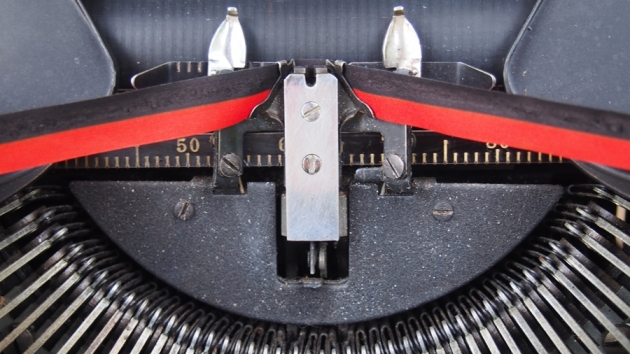
The pronoun I has always been capitalized in the English language for more than 700 years.

 1 of 1
1 of 1